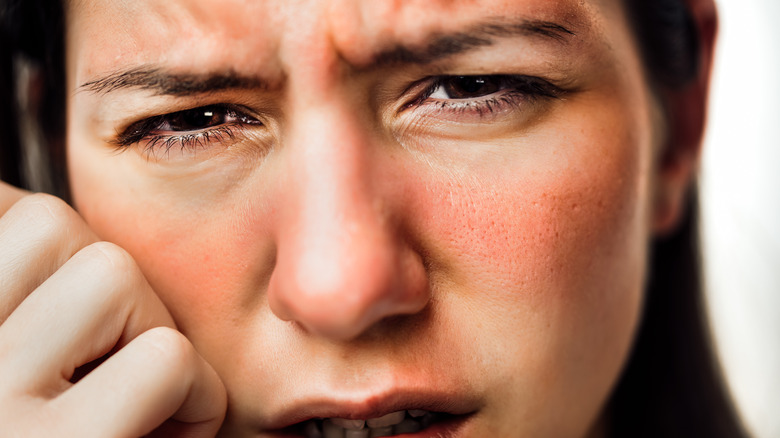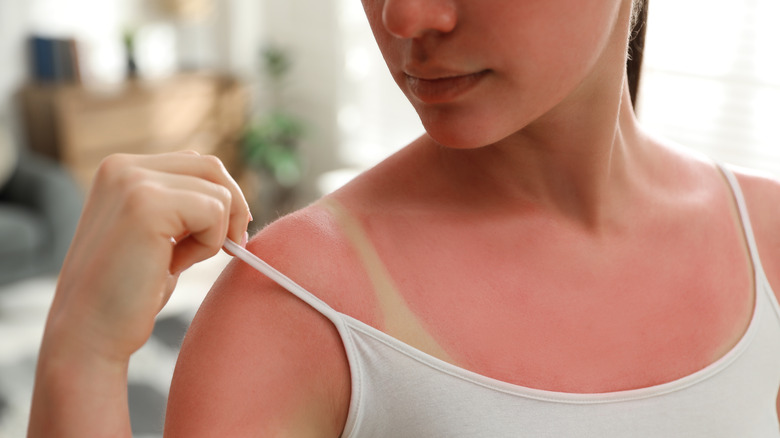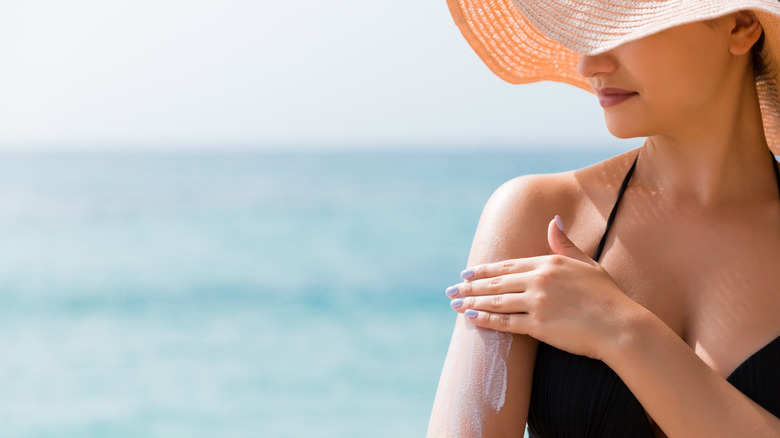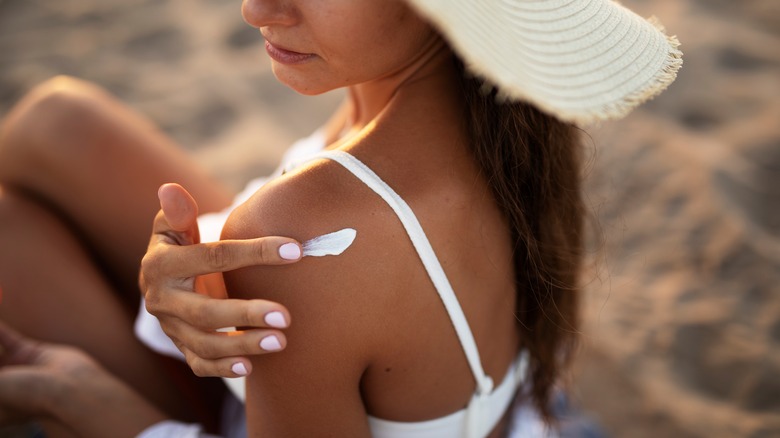Sunburn Vs Sun Poisoning: What's The Difference?
The warm weather, a gentle breeze, and the glow of a radiant sun ... at some point or another, we've all unintentionally fallen asleep on a beach chair only to awaken and resemble a lobster. According to the American Academy of Dermatology (AAD), skin cancer is the most common form of cancer in the United States, with an estimated one in five Americans developing the disease over the course of their life. While some skin cancers may be unavoidable due to factors such as genetics, others can be prevented through quite simple means, like limiting your time in the sun and wearing and reapplying sunscreen regularly.
The sun is incredibly powerful, and it is important to be aware of the differences that exist based on your sun exposure. So, what exactly is the difference between sunburn and sun poisoning? There are a few symptoms, in particular, to watch out for.
How to tell if you have sunburn or sun poisoning
A sunburn occurs when the sun's ultraviolet (UV) rays cause damage to the skin (via Schweiger Dermatology). While occurring more frequently in the summer months, it's important to note this can occur during any season of the year, even in the dead of winter. With a sunburn, your skin will turn bright red, and within a short while you can observe swelling and breaking of the skin. Typically symptoms will resolve within a few days. It has been determined that sunburns experienced during childhood and adolescence can increase a persons' risk of developing melanoma later on in life.
While you are probably most familiar with sunburns, you're going to want to avoid sun poisoning at all costs. Sun poisoning occurs from prolonged exposure to the sun's UV rays. Symptoms of sun poisoning include but are not limited to: blistering and peeling skin, dizziness, fever, chills, headache, and dehydration. While mild cases can resolve within a few days, many linger for over one week. Sun poisoning also increases future risk of things like skin cancer.
How to protect your skin from the sun
So who is more at risk for sunburns and sun poisoning? While people of all skin tones can experience sunburns and sun poisoning, those with fairer skin are at an increased risk for more severe skin damage (via Insider). In addition, people with medical conditions like lupus, eczema, and rosacea are at an increased risk as well. You should also check with your medical provider to determine if any of your regular medications can be putting you at an increased risk. Medications like antibiotics, acne treatments, and blood pressure pills can also leave you more vulnerable to sun burns and poisoning.
The AAD currently recommends staying in the shade between the hours of 10 a.m. and 2 p.m., when the sun's rays are the strongest. Additionally, wearing a broad-spectrum, water-resistant sunscreen with a SPF of at least 30 is recommended: It should be reapplied every two hours if you're outside, or after swimming or sweating. It is also crucial to familiarize yourself with the preexisting moles on your body. That way if you notice any strange, new changes, you will be able to discuss them with your dermatologist.
How to treat sunburn and sun poisoning
Caring for a sunburn usually can be remedied with a few home remedies. For starters, Mayo Clinic advises taking ibuprofen if the burns are blistered and painful. For long-term relief, experts recommend applying a soother like calamine lotion or aloe vera gel directly onto the skin. Additionally, you'll want to avoid further sun exposure by covering sunburned areas for the next trip out. When your skin begins to peel, try treating it with moisturizer.
Sun poisoning can be more concerning and may require medical attention. In addition to using the same home remedies on your skin as you would for a sunburn, you'll also need to drink plenty of fluids for the next few days, per WebMD. You can also apply a cold compress to ease inflammation in specific areas. If you must go out, avoid that 10 a.m. to 2 p.m. window when the sun is at its hottest.
The most important thing you can do is pay attention to your body. If your skin starts to show signs of infection (swelling, pus, or blisters), or if you develop a fever, experience vomiting, or dehydration, see a doctor right away (via Insider).




